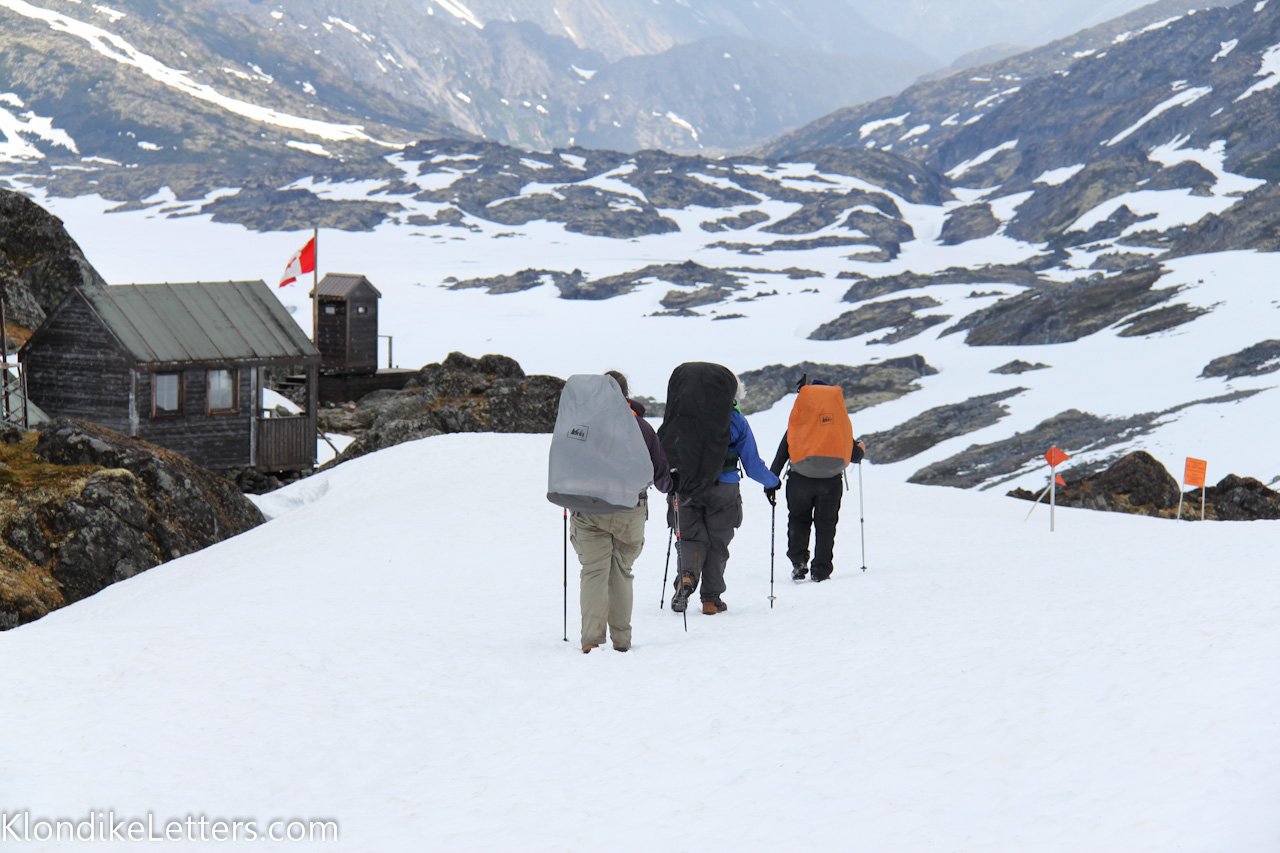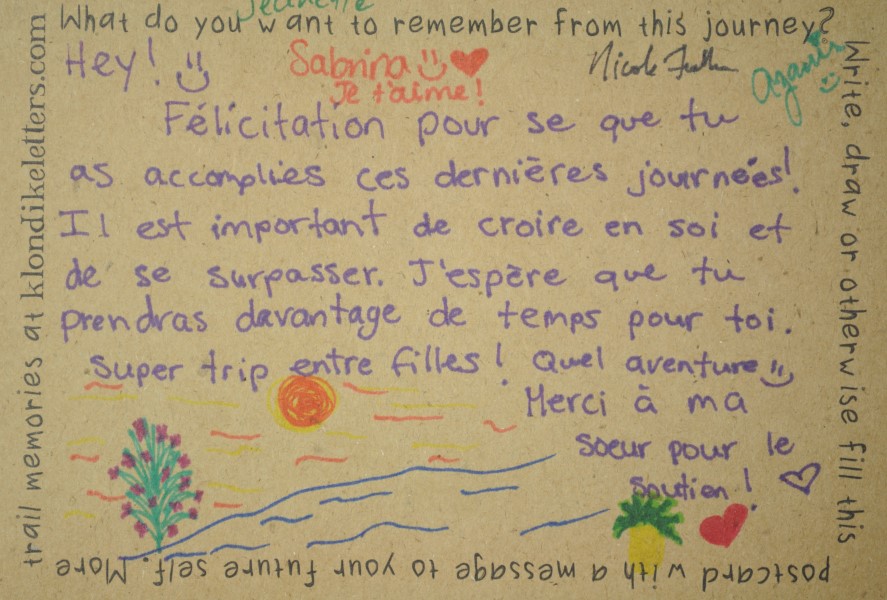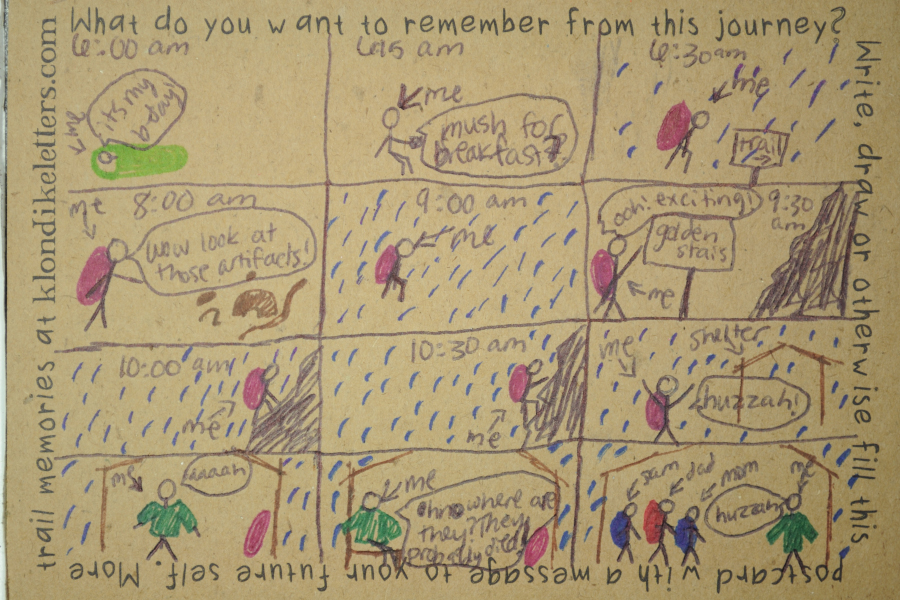About Corrie
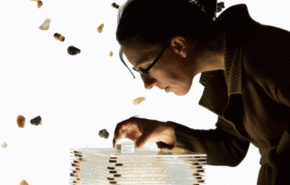
Corrie Francis Parks is an inventor of animation techniques. Adopting an investigative studio practice where substance collides with subject, each project builds upon the discoveries made in the previous, making the arduous process of frame-by-frame creation engaging. The results of this studio research manifest not only in short films, but in expanded animation projects that involve projection mapping, site-specific installations, augmented reality and… more
A Tangled Tale
A lone fish, hooked by an angler's line, encounters another in the same dire situation. As the two fish struggle against their fate, they develop an inevitable, entangling attraction. Is it love or merely a will to survive?
This vibrant, underwater world showcases a revolutionary approach to sand animation. Animated in sand with watercolor backgrounds, the 3600 frames of the film are a seamless blend of traditionally handcrafted imagery and digital painting. The technique involves moving sand on a backlit plate of glass, creating silhouetted animation that is captured frame-by frame. Each drawing is destroyed in the process of creating the next, so at the end of the process there remains only a pile of sand. Through the art of compositing and motion design, it is the first film to expand the black and white aesthetic of traditional sand animation to include vibrant color and cinematic movement.
Love is a slippery business. Some will point to the heavens or chance as the source of our relationships, while others plow forward on the strength of self-determination. Either way, there is pain intertwined with a growing attraction, and the survival of a relationship depends on the perseverance of the lovers. In "A Tangled Tale", the fisherman’s line becomes an enigmatic metaphor for a fate and attraction, leading us to consider what is the source of our love and where it will ultimately take us.
-
A Tangled TaleA lone fish, hooked by an angler's line, encounters another in the same dire situation. As the two fish struggle against their fate, they develop an inevitable, entangling attraction. Is it love or merely a will to survive? This vibrant, watery underwater world showcases my revolutionary approach to sand animation, a seamless blend of traditionally handcrafted imagery and technological innovation.
-
Making Of - A Tangled Tale
-
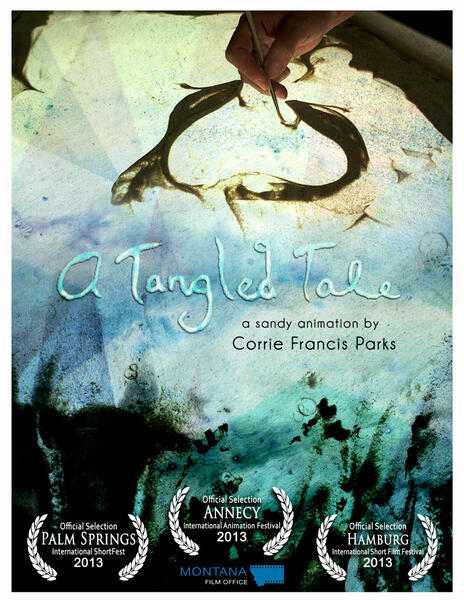 A-Tangled-Tale---Poster.jpgA Tangled Tale - film poster
A-Tangled-Tale---Poster.jpgA Tangled Tale - film poster -
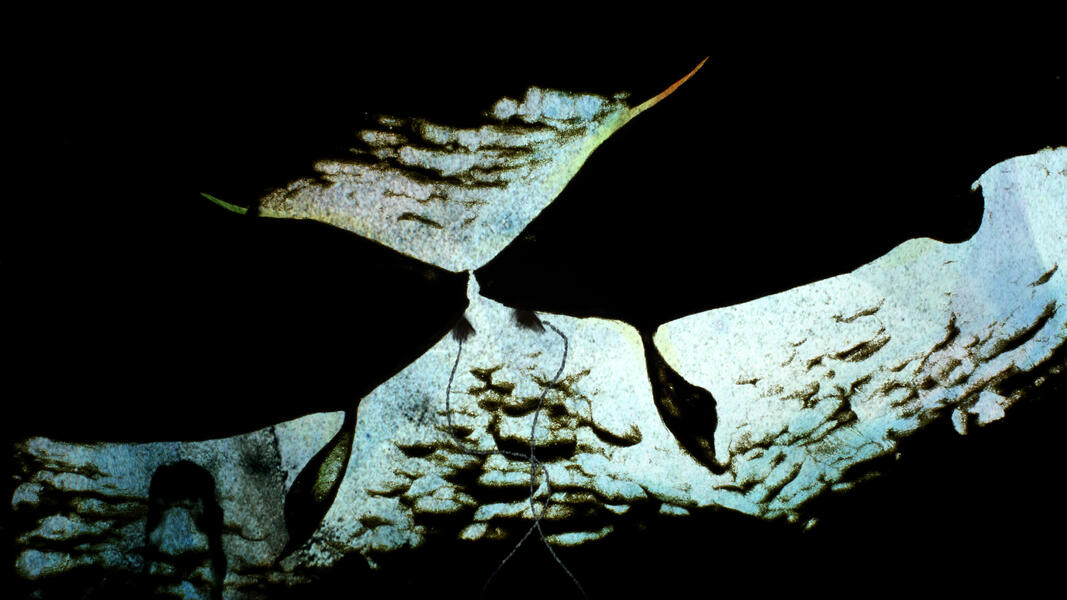 A Tangled TaleA Tangled Tale - film still
A Tangled TaleA Tangled Tale - film still -
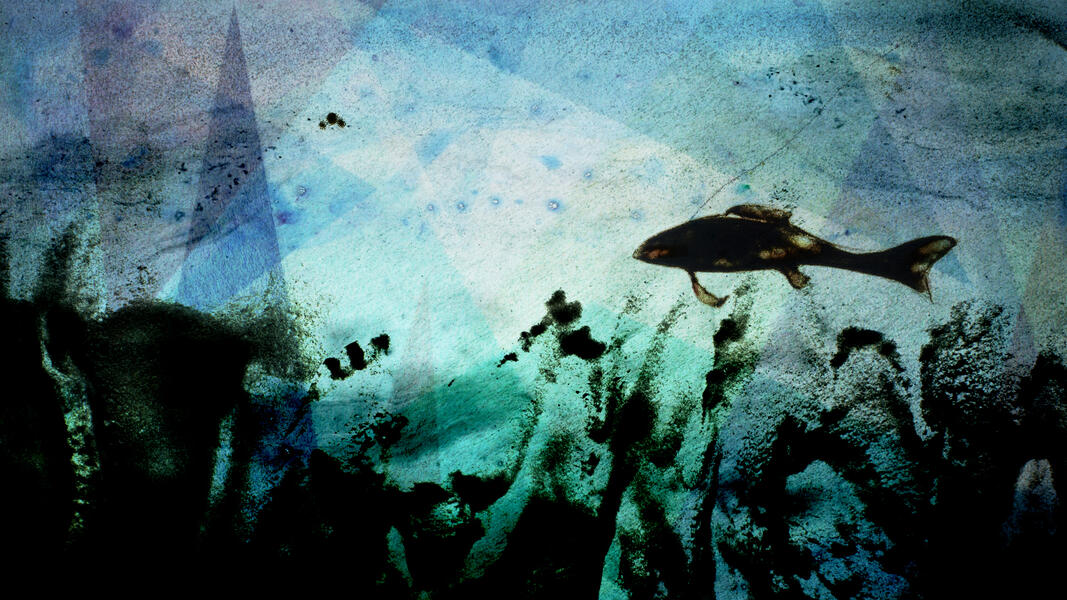 A Tangled TaleA Tangled Tale - film still
A Tangled TaleA Tangled Tale - film still -
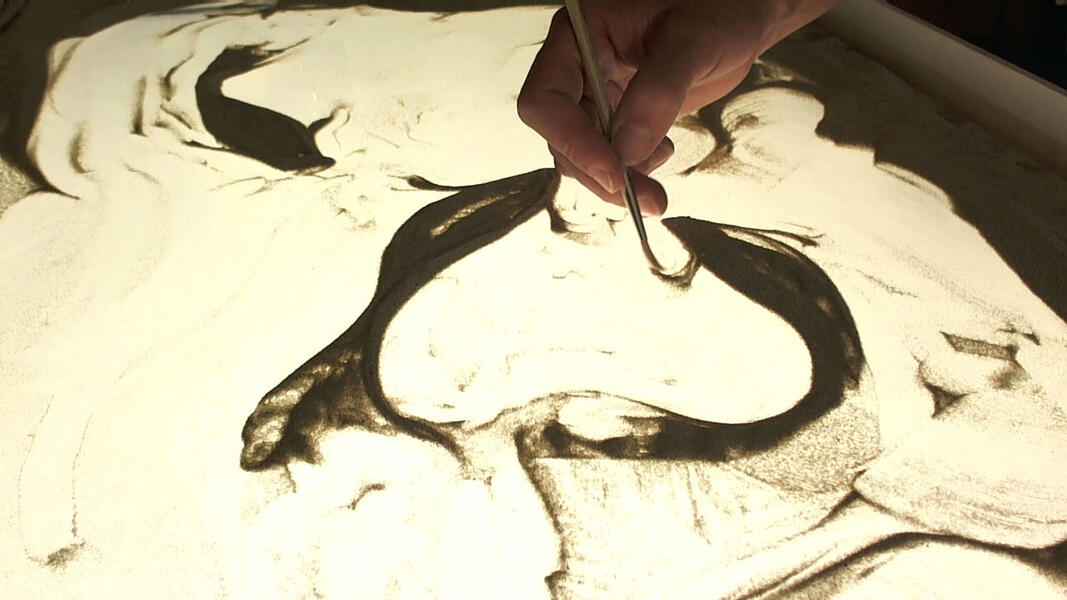 A Tangled Tale - productionProduction still
A Tangled Tale - productionProduction still
Bay Bingo - with Kelley Bell
Bay Bingo is a large-scale projection created for and exhibited at the Light City Baltimore Festival in collaboration with artist Kelley Bell. The whimsical animated work draws parallels between the fragile ecosystem and recent regeneration of the Chesapeake Bay and its landmark city, Baltimore, Maryland.
Subsequent commissioned versions of the work were created for the Great South Bay, in Patchogue NY, and Corpus Christi Bay in Texas.
Learn more about our City, our Bay, and the fish featured in Bay Bingo in our online Limerick Field Guide. As you watch the piece, play our mobile bingo game. The first to find 4 fish in a row, wins!
Exhibitions
Light City Baltimore
28 March – 3 April, 2016
Columbus Center, Baltimore, MD
Animafest goes MSU
21 May – 9 June, 2016
Zagreb Museum of Contemporary Art, Zagreb, Croatia
MoCA L.I.ghts
5-8 November, 2020
Bargain Bilge Facade, Patchogue, NY
underCurrent
18 September – 1 December 2023
CCBC Essex, MD
-
Projected Aquaculture - Light City 2016Projected Aquaculture is a large-scale projection mapping animation created by Corrie Francis Parks and Kelley Bell for Light City Baltimore 2016. This 5-minute looping animation was projected on the 250-foot-wide canopy of the IMET center on the Inner Harbor in Baltimore from March 28-April 4, 2016. Through a whimsical approach to animation, the piece presents the underwater ecosystem of the Chesapeake Bay, drawing parallels between the decline and resurgence of the Bay’s health and the similar decline and recent efforts to transform Baltimore into a livable city.
-
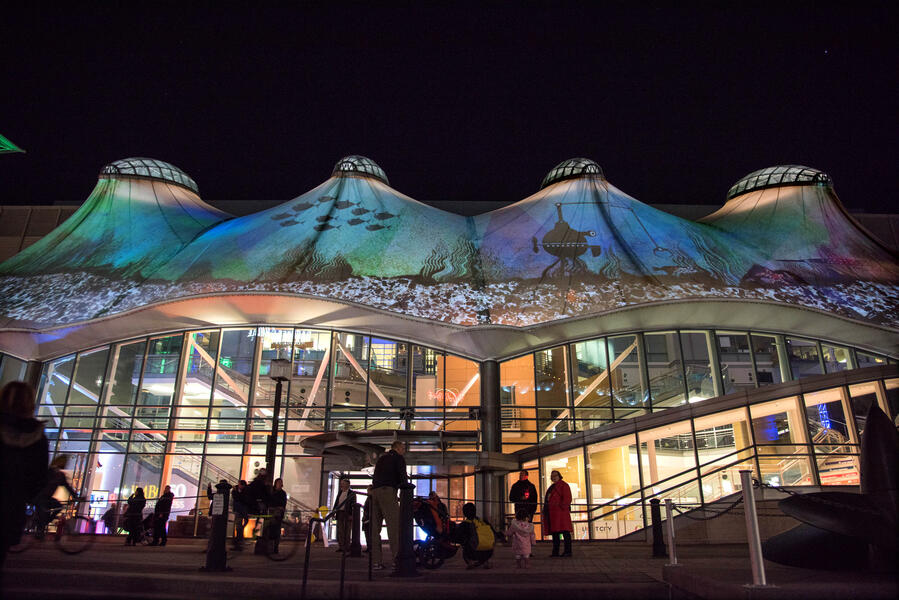 Projected AquacultureProjected Aquaculture on the Columbus Center canopy at Light City 2016
Projected AquacultureProjected Aquaculture on the Columbus Center canopy at Light City 2016 -
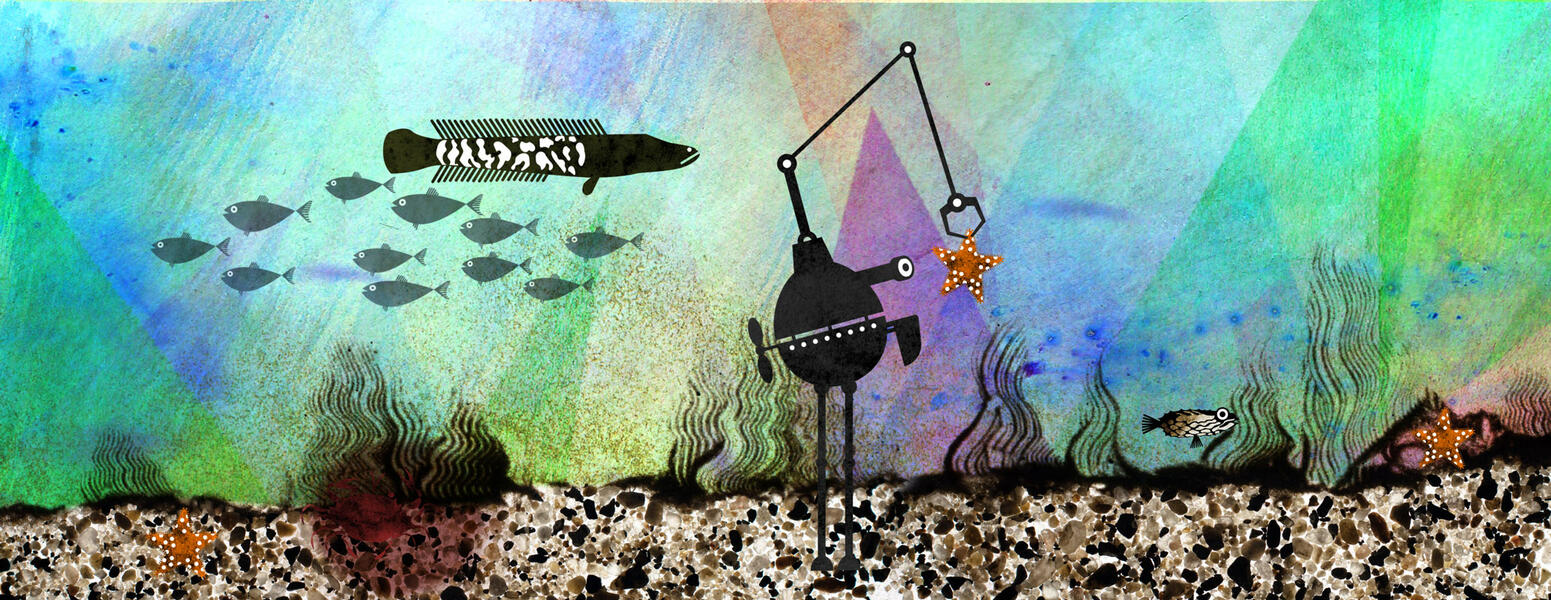 Projected AquacultureProduction still
Projected AquacultureProduction still -
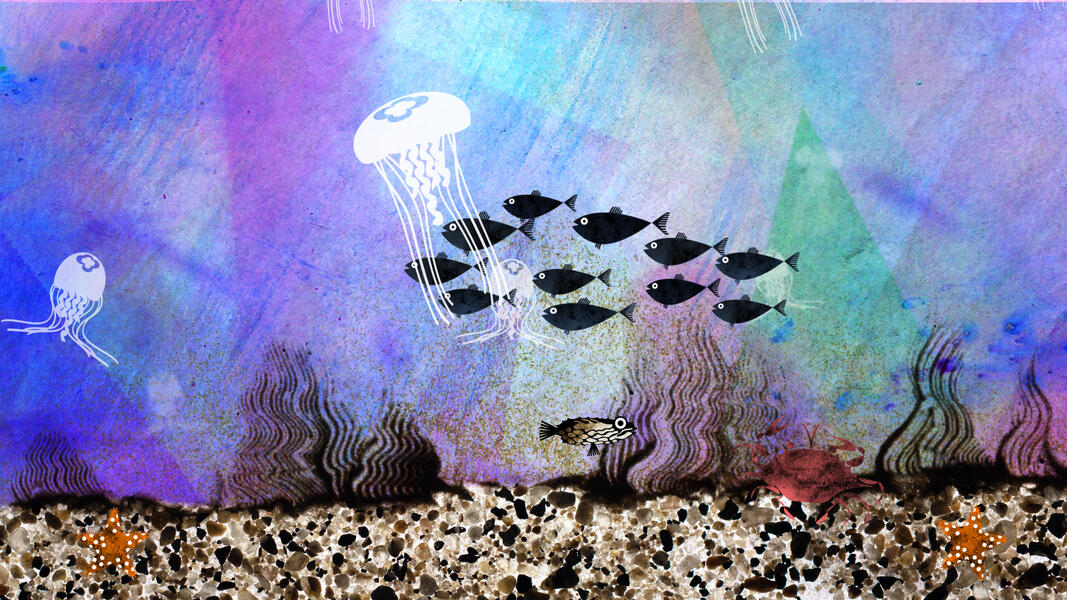 Projected AquacultureStill from the production
Projected AquacultureStill from the production -
 Projected AquacultureStill from the production
Projected AquacultureStill from the production -
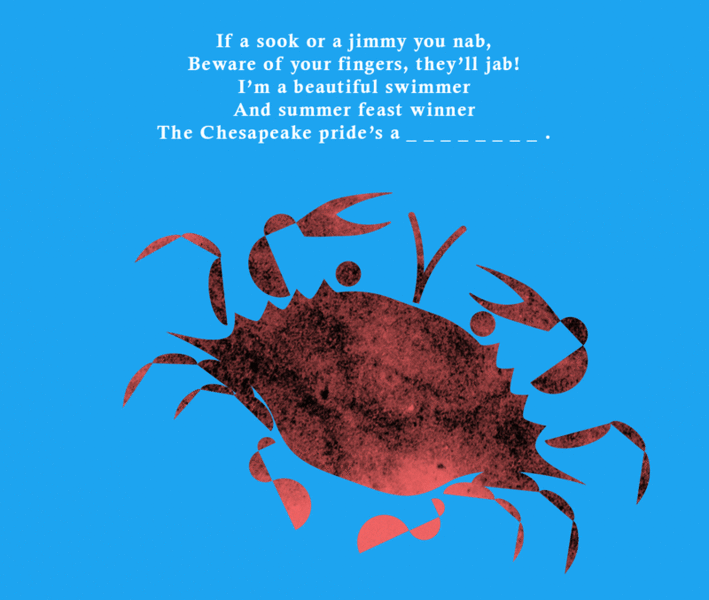 Blue CrabLimerick from the guidebook. Click the image to see it move. Can you solve it?
Blue CrabLimerick from the guidebook. Click the image to see it move. Can you solve it? -
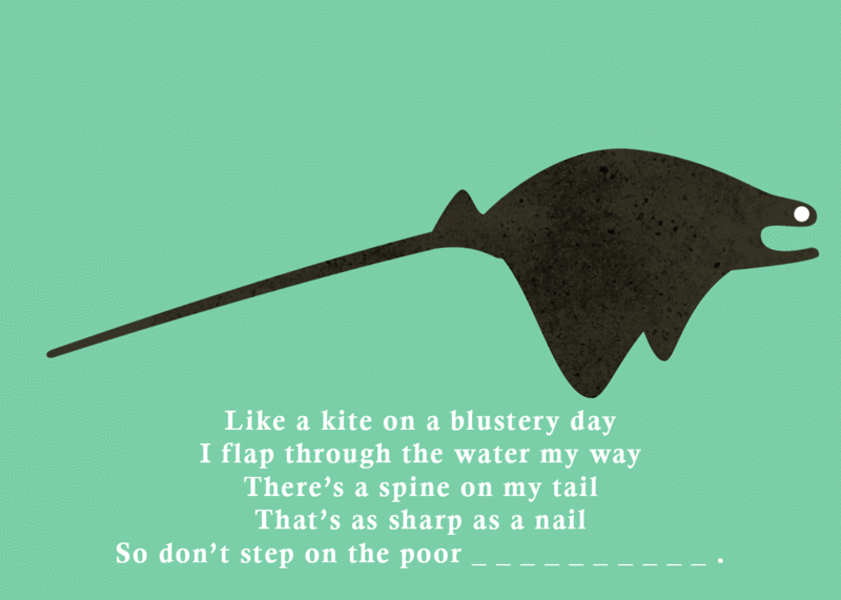 Cownose RayLimerick from the guidebook. Click the image to see it move. Can you solve it?
Cownose RayLimerick from the guidebook. Click the image to see it move. Can you solve it? -
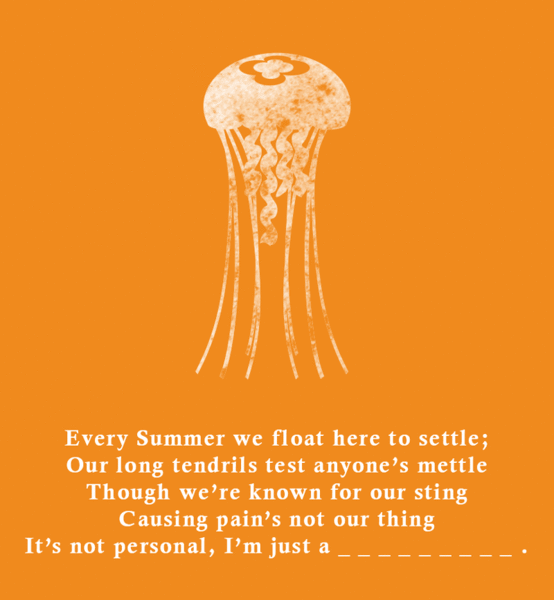 Sea NettleLimerick from the guidebook. Click the image to see it move. Can you solve it?
Sea NettleLimerick from the guidebook. Click the image to see it move. Can you solve it? -
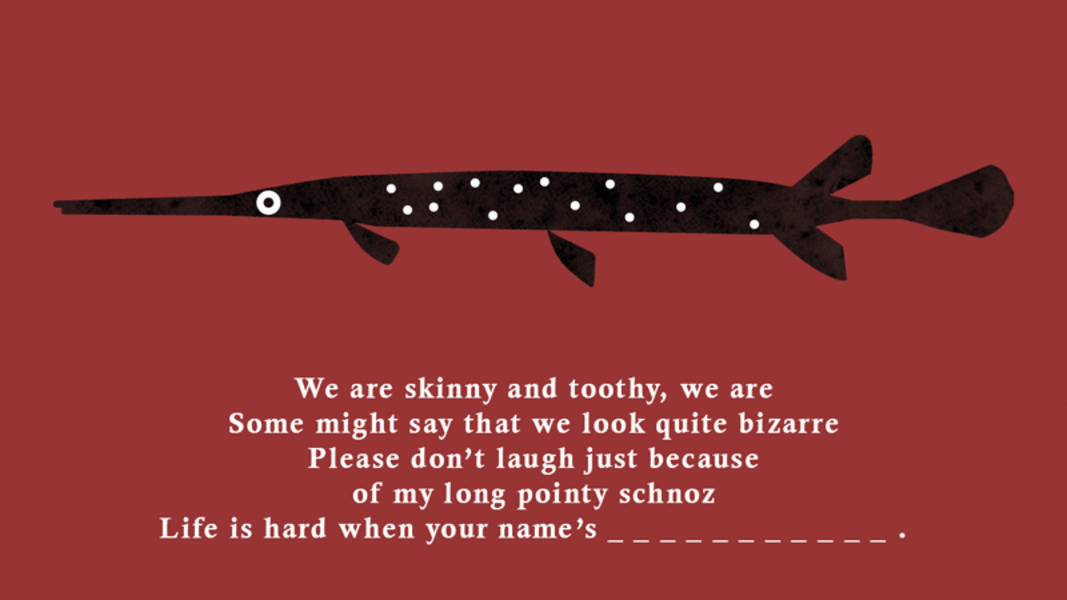 Long Nose GarLimerick from the guidebook. Click the image to see it move. Can you solve it?
Long Nose GarLimerick from the guidebook. Click the image to see it move. Can you solve it? -
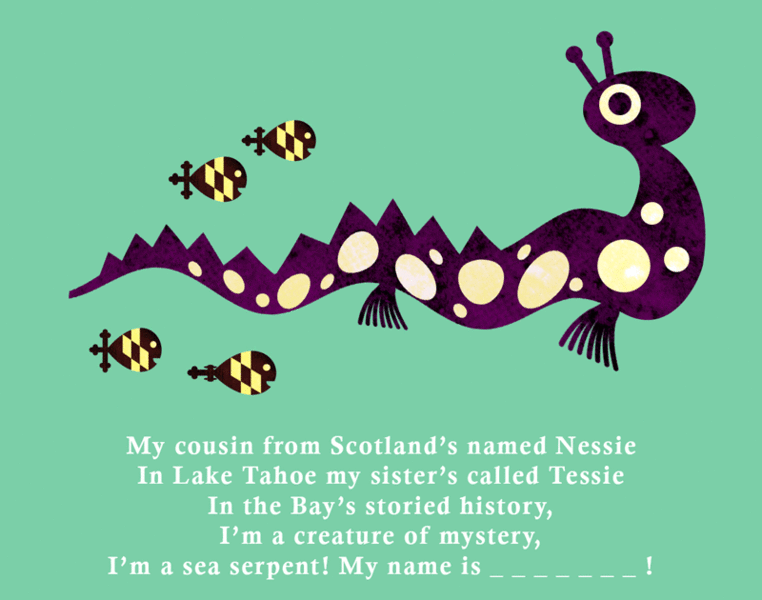 ChessieLimerick from the guidebook. Click the image to see it move. Can you solve it?
ChessieLimerick from the guidebook. Click the image to see it move. Can you solve it?
The Klondike Letters Project
The Klondike Letters Project is a public art project in collaboration with Klondike Goldrush International Historic Park. From June 25 thru July 7, 2012, I hiked the historic Chilkoot Trail as an artist-in-residence. During that 2 week period, I asked my fellow travelers to write a postcard to themselves as they hiked over the historic Chilkoot Pass from Alaska to the Yukon. The 174 postcards, along with sound recordings and my drawings from the trail, formed a collective memory portrait of the Chilkoot Trail. One year later, when the words and images of that journey had lost their sharpness and faded in the mind, I mailed those postcards to the writers as a vibrant catalyst for our memories of the Chilkoot.
From July 5 thru July 9, 2016, I hiked the trail again bringing a box of fresh postcards in the hopes of establishing an ongoing project. With the help of trail rangers and hut wardens from the National Parks Service and Parks Canada, we collected over 742 postcards in 2016, 1274 postcards in 2017, and over 1700 in 2018! Unfortunately the pandemic brought an end to the project in 2020. Learn more and read postcards on klondikeletters.com
On a deeper level, this project is about why we seek out places of wildness and what we experience there. Though the stampeders were seeking gold in the Klondike wilderness, the vast majority didn’t find their fortune. From their letters and diaries, we can see they did find other things: adventure, suffering, love, an insight into human nature at its best and worst. It’s a long journey to get to the Klondike. What do you find in this place that you can’t experience in your daily life, what moment is going to change your life in some small but hopefully significant way? Ultimately, this is what makes these places worth preserving.
-
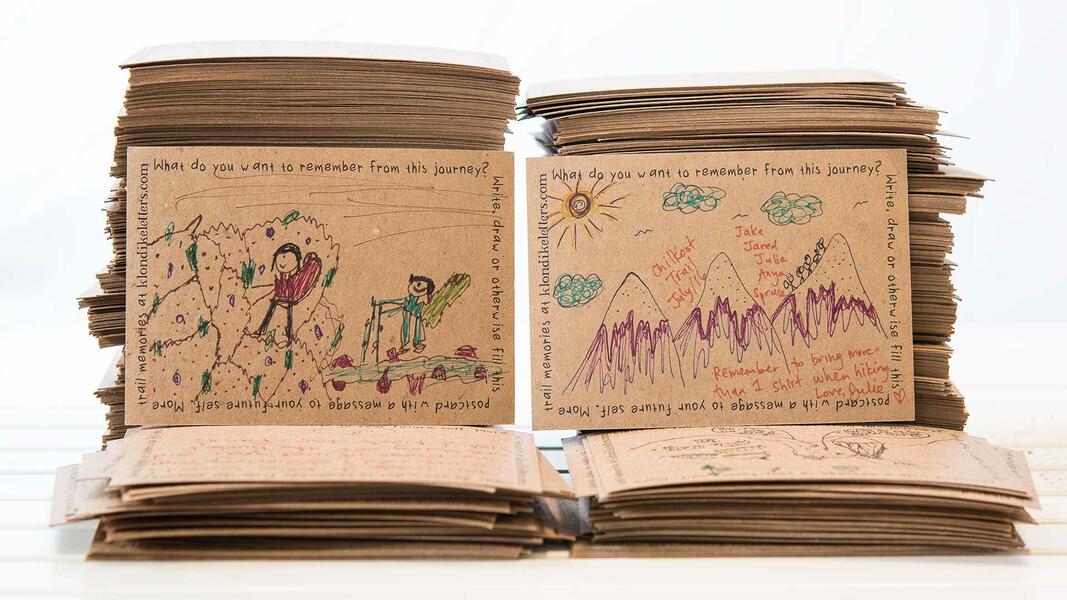 The Klondike Letters ProjectThe Klondike Letters Project is an ongoing public art project in Klondike Goldrush International Historic Park. Hikers preserve a memory from the top of Chilkoot Pass by writing a postcard to their future self, which is then sent one year later. These are postcards from 2016 season on the Chilkoot Trail.
The Klondike Letters ProjectThe Klondike Letters Project is an ongoing public art project in Klondike Goldrush International Historic Park. Hikers preserve a memory from the top of Chilkoot Pass by writing a postcard to their future self, which is then sent one year later. These are postcards from 2016 season on the Chilkoot Trail. -
 Chilkoot PassHikers arriving at the warming hut at the top of Chilkoot Pass.
Chilkoot PassHikers arriving at the warming hut at the top of Chilkoot Pass. -
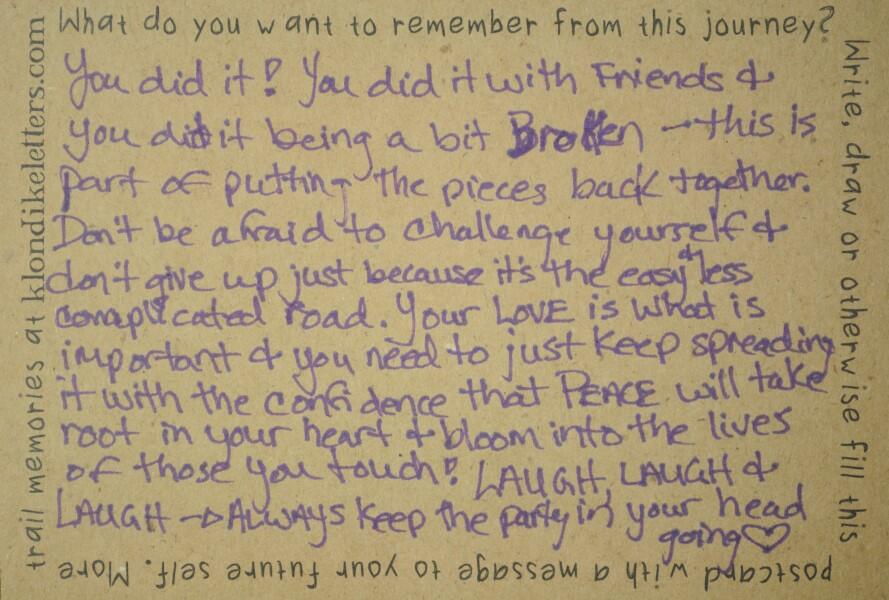 PostcardA postcard written by a hiker
PostcardA postcard written by a hiker -
 PostcardA postcard written by a hiker
PostcardA postcard written by a hiker -
 PostcardA postcard written by a hiker
PostcardA postcard written by a hiker -
 PostcardA postcard written by a hiker
PostcardA postcard written by a hiker -
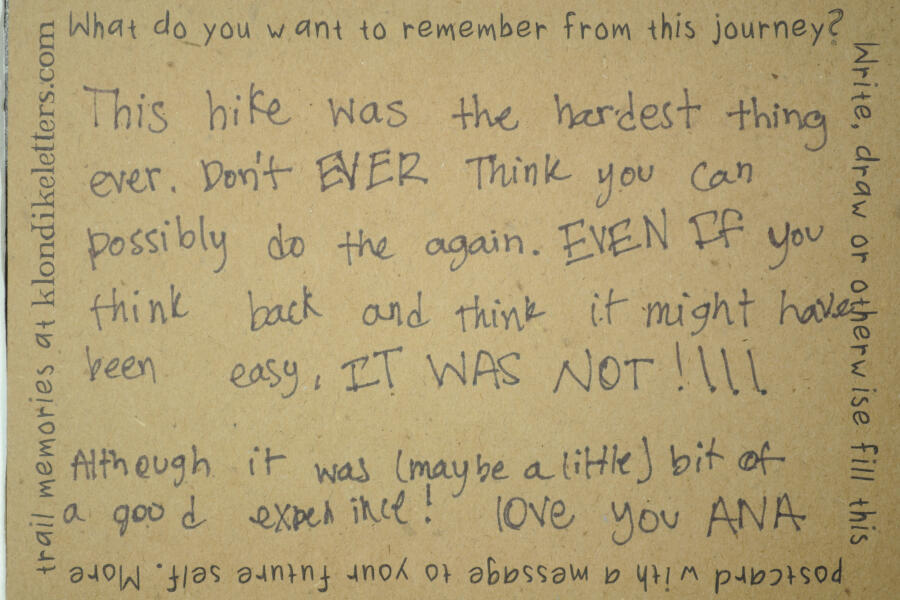 PostcardPostcard written by a hiker at the top of Chilkoot Pass
PostcardPostcard written by a hiker at the top of Chilkoot Pass -
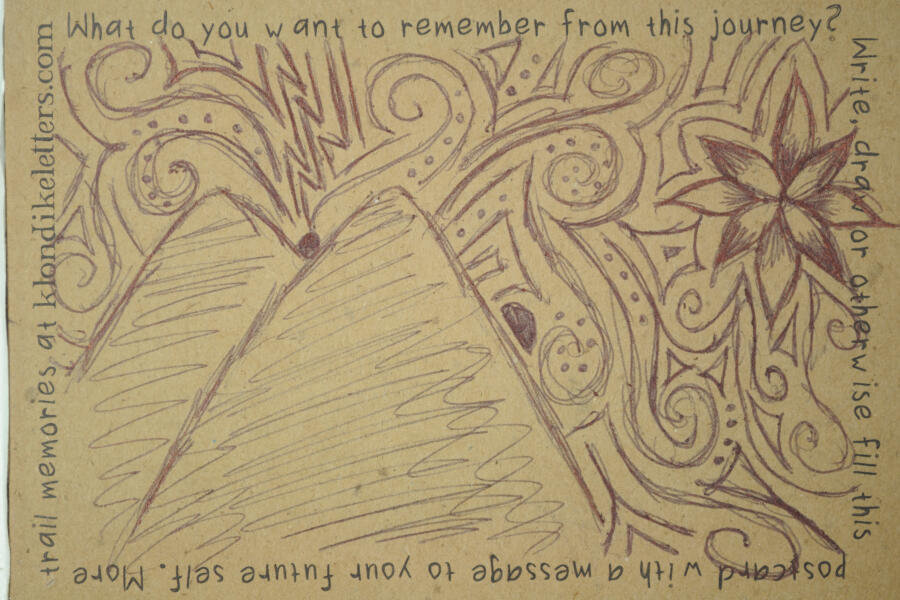 PostcardPostcard drawn by a hiker at the top of Chilkoot Pass
PostcardPostcard drawn by a hiker at the top of Chilkoot Pass -
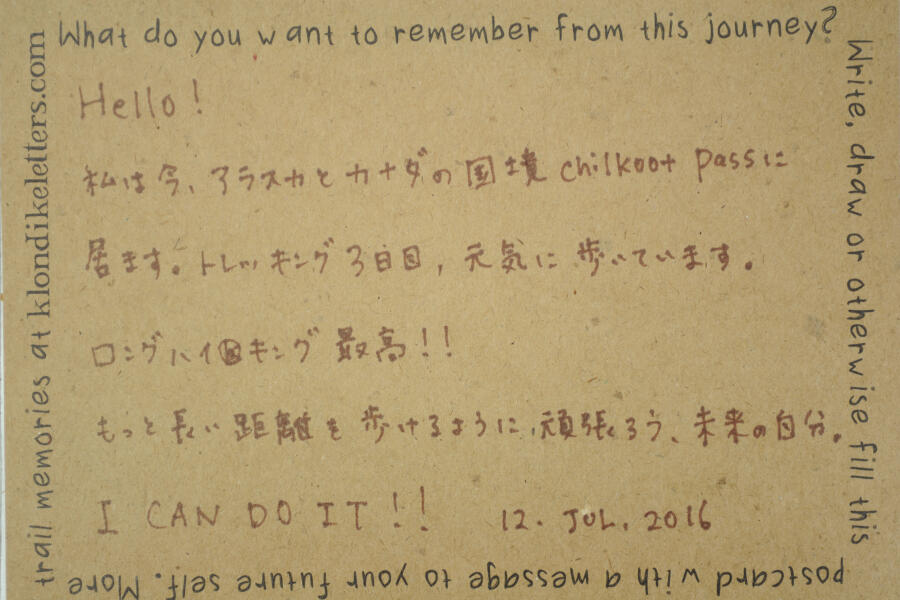 PostcardPostcard written by a hiker at the top of Chilkoot Pass
PostcardPostcard written by a hiker at the top of Chilkoot Pass -
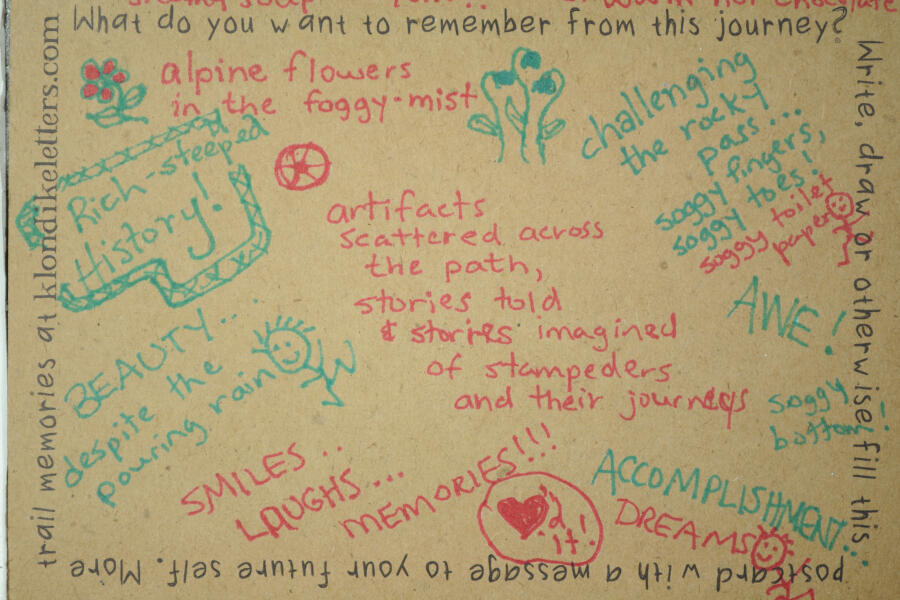 PostcardPostcard written by a hiker at the top of Chilkoot Pass
PostcardPostcard written by a hiker at the top of Chilkoot Pass















